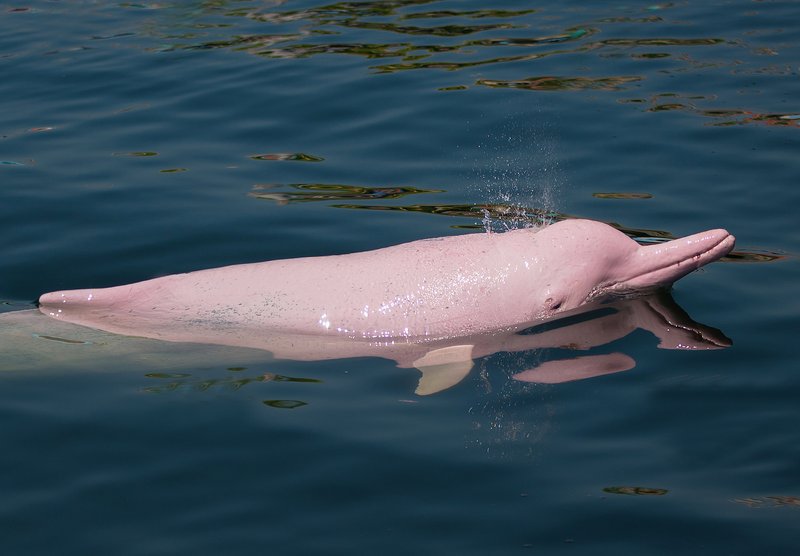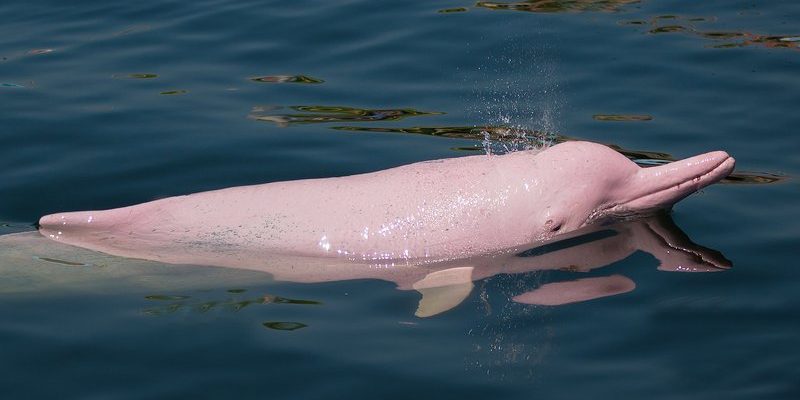
River dolphins, particularly species like the Amazon River dolphin (or boto) and the Ganges river dolphin, have adapted in fascinating ways to tackle their harsh environments. It’s like they’re nature’s little survival experts. Let’s dive into how these magnificent creatures manage to stay afloat, literally and figuratively, amid challenges that most of us would find overwhelming.
Unique Adaptations for Navigating Rivers
When you think of dolphins, you might picture them gliding through the ocean’s waves, but river dolphins are a bit different. They’ve developed some unique adaptations suited for their riverine homes. One of the most significant features is their echolocation ability.
Echolocation is a sort of biological sonar. River dolphins emit sounds that bounce off objects in their environment, helping them pinpoint the location of fish and navigate through murky waters. This is essential because many rivers are filled with sediment, making visibility low. Instead of relying on eyesight, they use their remarkable ability to “see” with sound, turning what seems like a disadvantage into a strength.
Moreover, river dolphins often have different body shapes compared to their ocean cousins. For example, the Amazon river dolphin has a more rounded body and a flexible neck, allowing it to maneuver around obstacles like fallen trees and rocky riverbeds. Imagine trying to dance in a crowded room—you’d need that flexibility to avoid bumps and bruises!
Finding Food in Challenging Conditions
Eating can be tricky for river dolphins, especially since they inhabit areas where food sources fluctuate. Most river dolphins primarily eat fish, but they can also feast on crustaceans and small aquatic animals. Their dining options depend largely on the season and water levels.
During the dry season, many rivers become shallower, which can make hunting more difficult. To adapt, river dolphins are known to travel greater distances in search of food. They might even coordinate their hunting with other dolphins, showcasing a level of social behavior that’s pretty fascinating. It’s almost like a well-organized potluck where everyone brings their best dish!
Here’s an interesting tidbit: river dolphins often employ a technique called ‘fish herding.’ They will work together to guide schools of fish into shallow areas, making it easier for them to catch their dinner. This collaboration not only showcases their intelligence but also highlights their adaptability.
Dealing with Pollution and Human Impact
Unfortunately, river dolphins face serious threats from human activities. Pollution, habitat destruction, and boat traffic can have devastating effects on their populations. Many rivers are lined with factories and cities, leading to toxic runoff in the water. This can harm fish populations, meaning less food for our dolphin friends.
Additionally, boat traffic can pose a direct threat. Collisions with boats can injure or kill dolphins, and noise pollution from engines can disrupt their echolocation. You might be wondering, “What can be done?” Well, conservation efforts are crucial. Protecting river ecosystems through sustainable practices is essential for the survival of these beloved creatures.
Educating local communities about the importance of river dolphins can also help. When people understand how integral these animals are to the health of their environment, they may be more inclined to take steps to protect them.
How Climate Change Affects River Dolphins
Climate change isn’t just a distant worry—it’s impacting river dolphins right now. Changes in rainfall patterns can lead to altered water levels, affecting not only the depth but the flow of rivers. This can shift the distribution of fish, making it harder for dolphins to find food.
Warmer water temperatures can also lead to decreased oxygen levels, which can be harmful to aquatic life. It’s like trying to breathe in a stuffy room—you just can’t get enough fresh air! As these ecosystems shift, river dolphins may struggle to adapt quickly enough to survive.
Conservationists are keeping a close eye on how these changes affect dolphin populations. They advocate for strategies to mitigate climate change impacts, such as protecting wetlands. Who would have thought that saving a swamp could help a dolphin?
Creating Safe Spaces Through Conservation
For river dolphins to thrive, creating protected areas is vital. Conservation initiatives aim to establish marine protected areas in rivers, similar to those found in oceans. These areas would provide safe havens for dolphins away from pollution and boat traffic, giving them a fighting chance.
Countries like Brazil and India have launched programs to create sanctuaries for river dolphins. These safe spaces allow them to breed, feed, and live without the constant threat of human interference—imagine having your quiet retreat where you can just relax and be yourself!
Additionally, community involvement in conservation efforts can make a huge difference. When local populations engage in protecting their waterways, they become champions for the dolphins. It’s all about working together to ensure that future generations can enjoy these extraordinary creatures.
The Importance of River Dolphins in Their Ecosystem
River dolphins play a crucial role in their ecosystems. As predators, they help maintain the balance of fish populations, which is vital for the overall health of the river environment. Their presence signifies a healthy ecosystem—if river dolphins are thriving, it often means the waters are clean and vibrant.
Moreover, studying these dolphins can offer insights into the health of freshwater ecosystems as a whole. They are like the canaries in the coal mine, alerting us to environmental changes and challenges. By protecting river dolphins, we’re also protecting countless other species that share their habitat.
So, next time you hear about river dolphins, think of them not just as charming animals but as important indicators of our planet’s health. It’s like trying to keep the whole garden flourishing by nurturing one of its most vibrant flowers.
Taking Action: What You Can Do
Feeling inspired? There are plenty of ways you can contribute to river dolphin conservation. Here are some ideas to get you started:
- Support Conservation Organizations: Look for local or international organizations focused on river dolphin protection.
- Educate Yourself and Others: The more people know about the challenges river dolphins face, the more support they can rally for change.
- Participate in Clean-Up Events: Many rivers host community clean-up days where you can help remove trash and debris.
- Advocate for Sustainable Practices: Encourage your community to adopt sustainable practices to protect waterways.
Every little action counts. By taking steps toward conservation, you contribute to the future of these remarkable creatures.
In conclusion, river dolphins are incredible survivors in harsh environments. Their unique adaptations, social behaviors, and resilience showcase nature’s wonders. However, they face significant challenges due to human activities and climate change. By understanding their struggles and supporting conservation efforts, we can help ensure that they continue to thrive in our rivers. So let’s be advocates for these amazing creatures, ensuring that their stories—and the rivers they call home—continue for generations to come.

